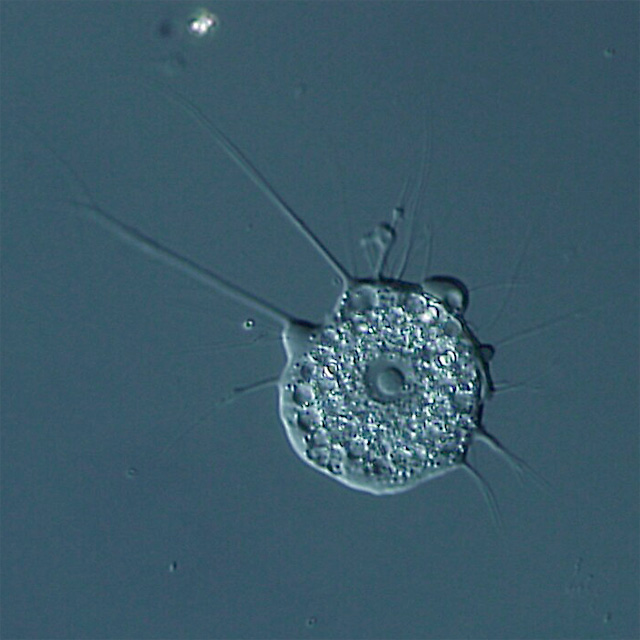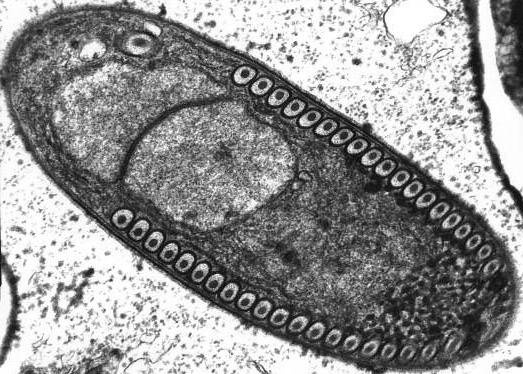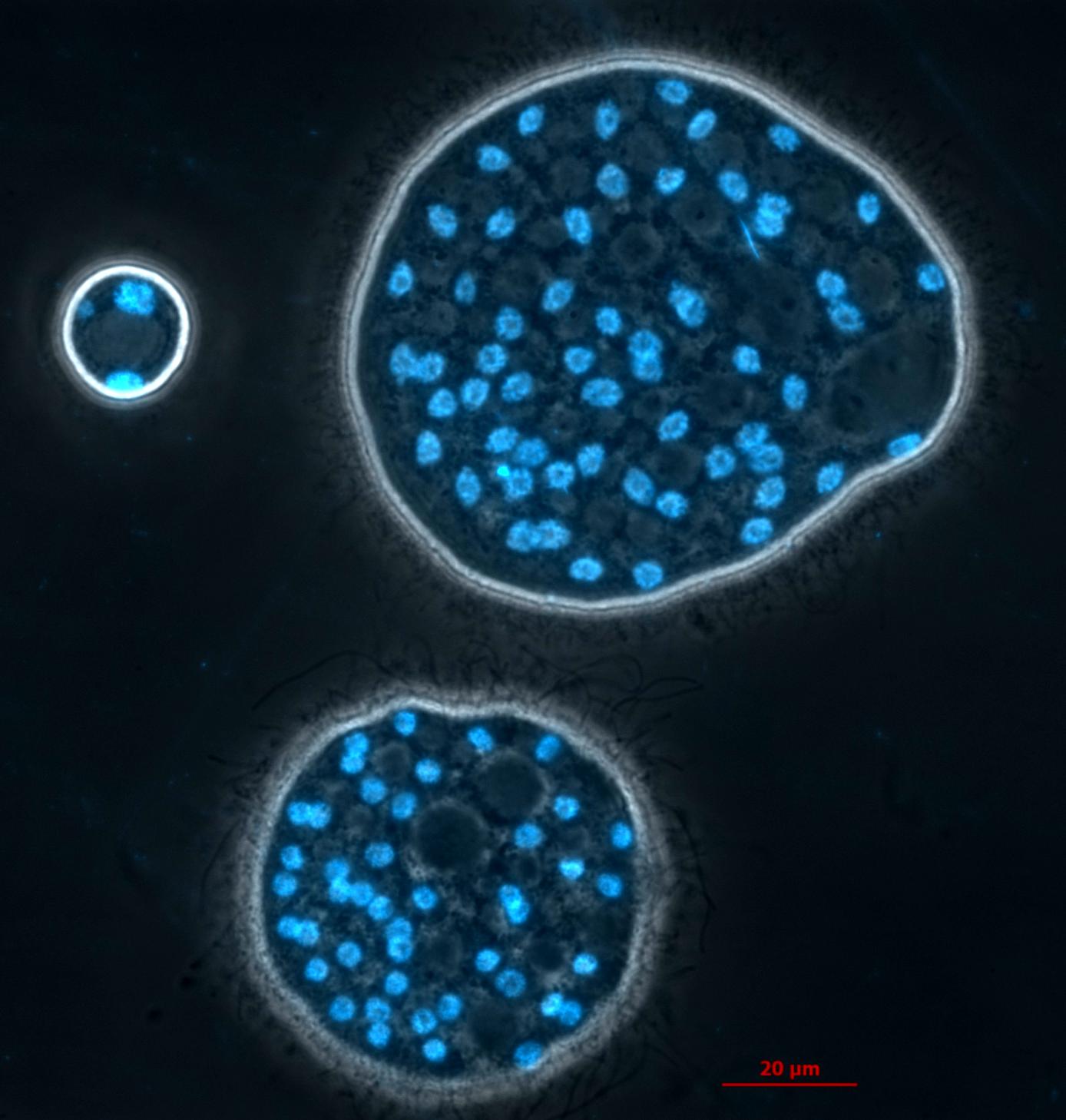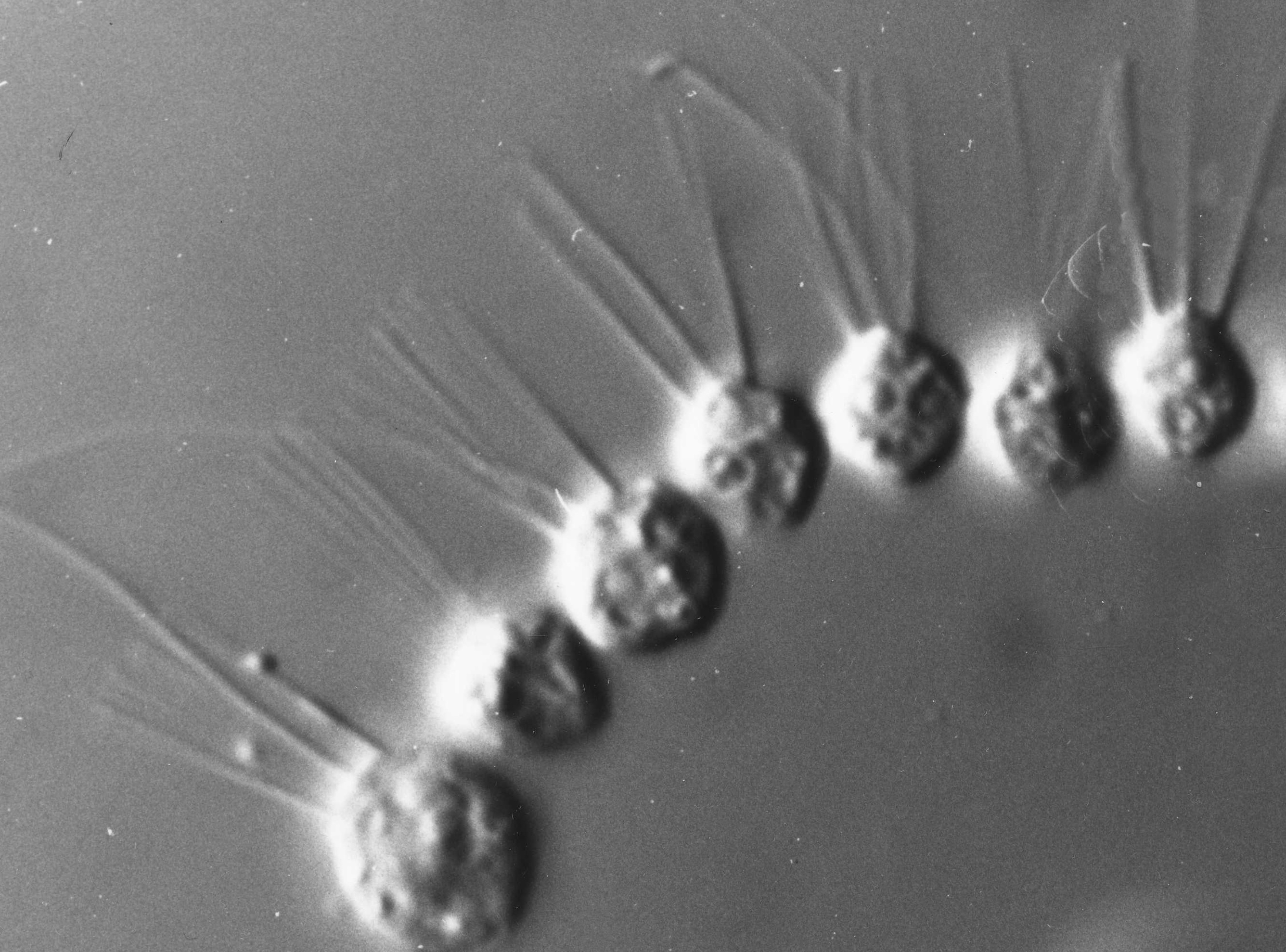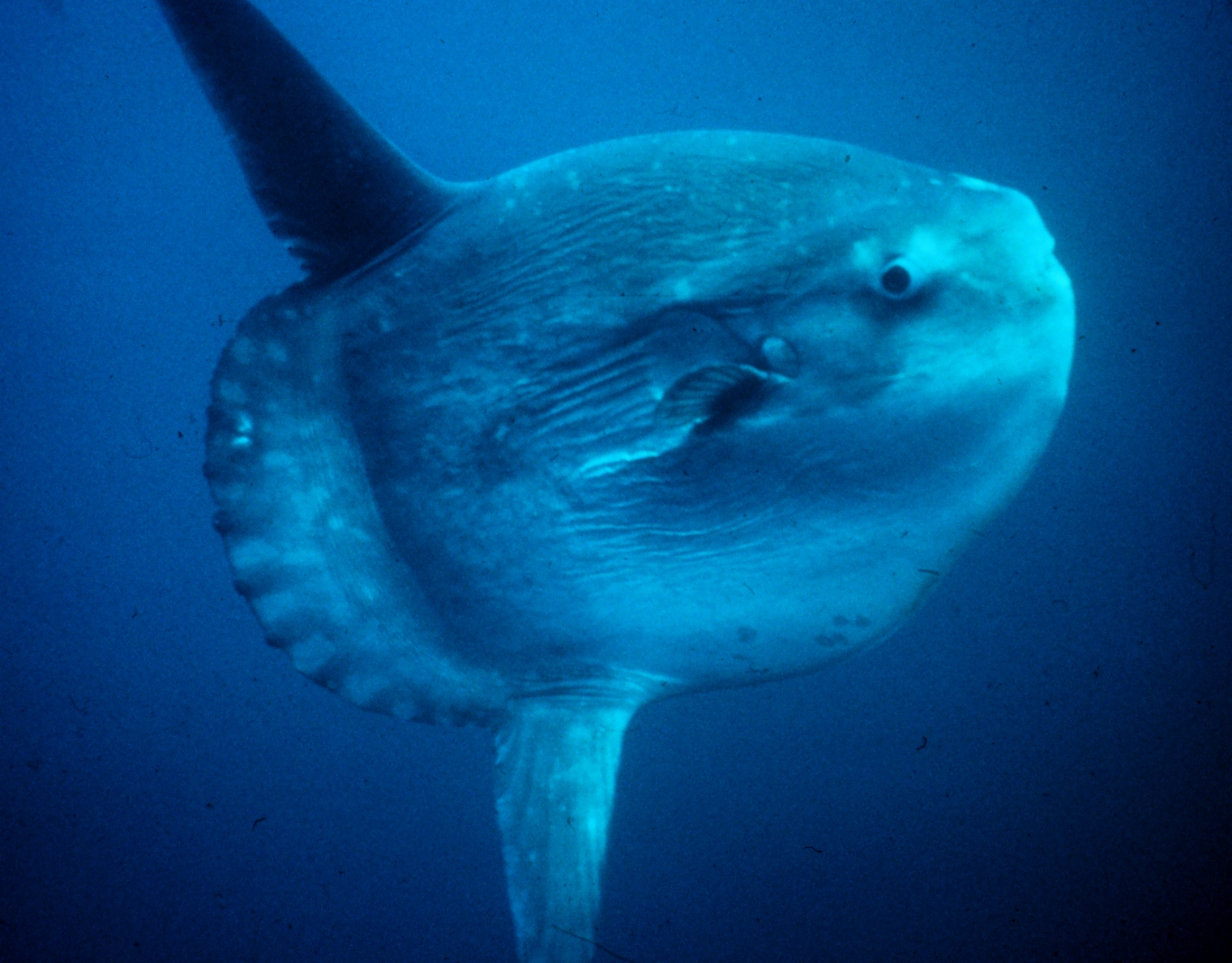Holozoans facts for kids
Quick facts for kids Holozoans |
|
|---|---|
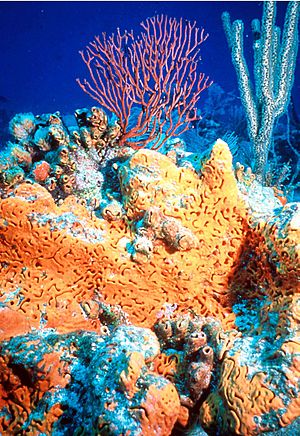 |
|
| Orange elephant ear sponge, Agelas clathrodes, in foreground. Two corals in the background: a sea fan, Iciligorgia schrammi, and a sea rod, Plexaurella nutans. | |
| Scientific classification |
|
| (unranked): | Unikonta |
| (unranked): | Obazoa |
| (unranked): | Opisthokonta |
| (unranked): | Holozoa Lang et al., 2002 |
| Subgroups | |
|
|
Holozoa is a special group of living things. It includes all animals and their closest single-celled relatives. Think of it as the family tree branch that leads to animals! This group does not include fungi.
A well-known example of a holozoan is the choanoflagellate. These tiny, single-celled organisms look a lot like the cells found in sponges. Scientists study them to understand how animals might have first evolved. For instance, Proterospongia is a choanoflagellate that gives us clues about how sponges came to be.
Evolution of Holozoa
The story of life on Earth is like a giant family tree. Scientists use a "phylogenetic tree" to show how different groups of living things are related. This tree helps us see how new groups, called "clades," branched off from older ones over millions of years.
Holozoa is one of these important clades. It's part of an even bigger group called Opisthokonta, which also includes fungi. Opisthokonta started to appear about 1.3 billion years ago! Holozoa itself began to evolve around 1.1 billion years ago.
How Holozoa Branches Out
The Holozoa group has several smaller branches:
- Ichthyosporea: These are tiny, single-celled organisms.
- Pluriformea: This branch includes organisms like Syssomonas and Corallochytrium.
- Filozoa: This is a very important branch because it leads directly to animals!
Filozoa and the Path to Animals
Within Filozoa, there are two main groups:
- Filasterea: These are also single-celled organisms.
- Choanozoa: This group is super close to animals. It includes:
* Choanoflagellatea: As we mentioned, these look a lot like sponge cells. They are a key link to understanding animal origins. * Animalia: This is us! All the animals you know, from tiny insects to huge whales, belong to this group.
So, the evolutionary journey from simple single-celled organisms to complex animals like us is a long and fascinating one, with Holozoa being a crucial step along the way!
| Opisthokonta |
|
||||||||||||||||||||||||||||||||||||||||||||||||||||||||||||||||||||||||||||||||||||
See also

- In Spanish: Holozoa para niños


